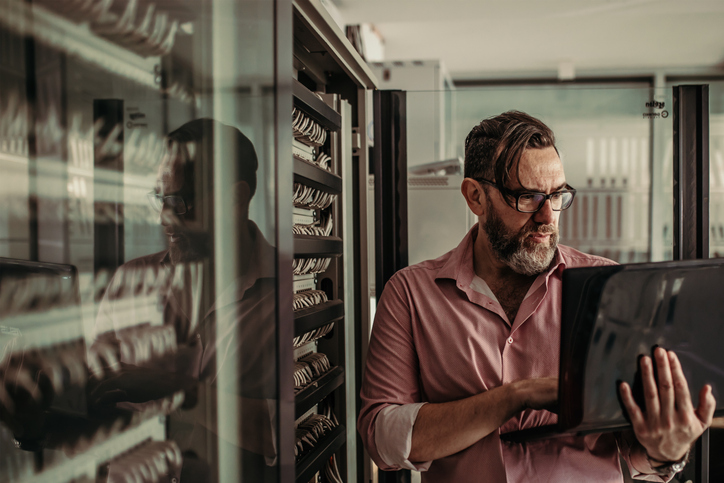I’ll avoid the dreaded phrase “the new normal”, but it’s only natural that we are drowning in thoughts of what might happen when COVID eventually recedes. Here, I’d like to propose another way to think about what may happen through the lens of our cultural and scientific history and add a few more thoughts on how we start to think about what the world might look like, together with implications for use of technology infrastructure.
It may be helpful to think about this by reflecting on other major change events and movements. “There is nothing so stable as change,” said Bob Dylan, and of course he was right. Periodically, we go through breakthrough moments of discovery or inflexion points, large and small, after which nothing is quite the same again.
In 19th-century science, Darwin’s On the Origin of Species reframed the way we think about evolution and faith. In the 20th-century, modernism saw new approaches to literature, painting, music, architecture and design, with a focus on the non-traditional, abstract and non-linear from Picasso and Stravinsky to Le Corbusier and James Joyce in a way that was shocking at the time.
All these moments and movements left the world freshly painted. It may be that we are at a similar crossroads as a result of COVID. It’s at least arguable that the pandemic will act as a catalyst for new ways of living, altered aspirations and a rejection of what for decades has been the consensus of wisdom. I’m talking here about the 9-to-5 office culture, the assumption that most of us will want to be retained knowledge workers, own consumer durables, live in urban conurbations, and graft for 50 years to create enough disposable income to feed leisure lives.
Let me posit some possible scenarios.
We have a new focus on domestic and family life. Most of us have been spending more time at home with families and that has changed our habits. Sales of baking staples were up 24%, we’re gardening more than ever, we have gone back to a fascination with arts and crafts, and we have finally got round to the DIY and decorating we had long promised. Have we now become accustomed to life lived in a minor key, and will we permanently be less sociable, leading to a smaller leisure, travel and hospitality sector? In this world, pubs and restaurants shut their doors and sell their premises while airlines and hotel operators struggle to carry on with reduced demand, making their sectors unprofitable.
Wellbeing becomes the new currency for a successful life. We’ve certainly in the past year seen a surge in awareness of mental health and awareness of the fragility of human psychology. Will this be reflected in a more caring, sharing culture where success is graded in softer measures than revenue and profitability or where products aren’t bought but rented? Here, companies urgently will need to reassess their human capital management (HCM) policies and ditch traditional models of compensation, working hours and ways to motivate and retain people.
Sustainability becomes the new critical KPI. The pandemic was, arguably, created by a lack of respect given to the principles of sustainability. It’s likely that this will breed new attitudes towards animal welfare and yet more attention on carbon consumption. Certainly, companies are becoming acutely aware of what happens to their reputations and ability to hire if they can’t display green credentials or show other signs that they are not purely money-making machines. In this world, Generations Y and Z inspect the ethics of potential employers forensically, and won’t work for the familiar enterprises that now struggle with their toxic brands.
A guide to responsible technology practices
As I say, it’s by no means clear what happens next and how ingrained changes will be. It’s plausible, of course, that we largely go back to old habits although that seems unlikely with a groundswell of employees having become accustomed to a different way of life and a different way of working. And it’s worth noting that even evidence of a return to ancient ways of living in the form of crafts, baking and so on are now very much digitally imbued activities. We download apps, consult websites and share ideas on forums when we try out a new recipe, and this sort of binary activity is part of the fabric of life because it is faster, more convenient and more scalable than the older alternatives. But what we need to do is strike the perfect balance between technology-enabled agility and what we want to do with our time.
What we will need to manage through change is clear though. Adaptivity, enabled by robust, data-centric digital business designs, will become the watchword of operations. In other words, companies will need to be able to move fast, whatever happens, changing operating models, moving into adjacent markets and generally taking nothing for granted. In the new Age of Uncertainty, legacy systems have to be reassessed in the context of how best to build for agility. Siloed organisations must come together around a common source of data truth in order to make confident decisions. Technology investments themselves must allow for the possibility of spikes and troughs in demand in order to manage costs and maintain competitiveness. For leaders, the pace of innovation will accelerate. ‘Thin will be in’ and companies that understand how to rapidly prototype and improve upon minimally viable solutions will thrive.
Even before this coronavirus, we were seeing some seismic changes wrought by globalisation and the rise of trillion-dollar internet superpower powers. Are we ready for businesses that reach across markets, conquering them by being technically superior, a la Amazon? And what are you going to do when one of them targets your sector?
As history has shown, we can’t know the future, but we can prepare ourselves for new shocks, U-turns and surprise changes in direction. Only by anticipating so far as is possible and then setting ourselves up to be flexible, creative and optimised for change will we be able to evolve and succeed.








